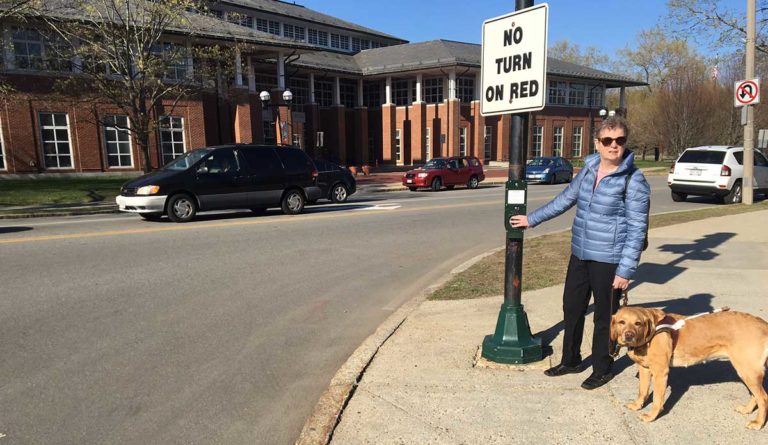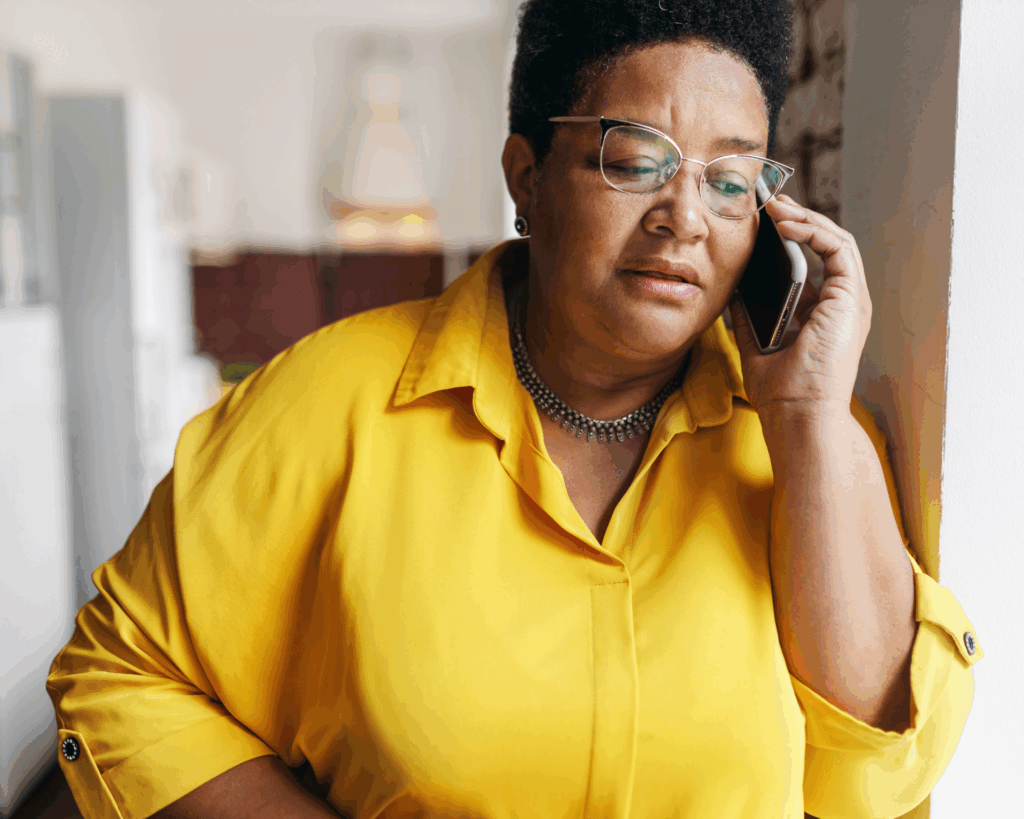Signaling Accessibility
Lack of uniformity in state or federal laws for crosswalk signal features leaves auditory crosswalks to the discretion of individual municipalities, resulting in inconsistent signals for those who are visually impaired.

Read Time: 4 minutes
Published:
Listen at the next downtown intersection you come to and there might be a voice ordering that you “Wait, wait.” Compare that to crossing a street in the suburbs, where you can hear what at first sounds like a flock of metallic birds. Even from one crosswalk to the next in the same city, the variance is striking: simple beeping, rattling, even a voice detailing the street names. And depending on where you are, maybe there’s just silence. Walking out the door, a person who is visually impaired does not know what to expect.
The Mass Alliance of Commissions on Disability, co-founded by Colin Killick, will soon propose a statewide regulatory policy for Accessible Pedestrian Signals (APS). Comprised of regulatory experts and professionals scattered across the state, this Alliance is a project of the Disability Policy Consortium. During one of the group’s monthly meeting’s via conference call, Newton Massachusetts’s Americans with Disabilities Act coordinator Jini (pronounced Jeanie) Fairley expressed the challenges that visually impaired people such as herself can face when crossing a street.
“I use four Accessible Pedestrian Signals to get to work every day,” Fairley said. In her work she has found that “only 30% of Newton’s crosswalks are accessible.”
Killick and Fairley, along with Cambridge’s ADA coordinator Michael Muehe, developed a survey that explored the ramifications of having no state or federal law for crosswalk signal features. “What we found put some teeth behind our recommendations,” Fairley said.
Nearly two-thirds of the 246 who responded had a visual impairment. The results are based on perceived accessibility rather than the actual statistics on crosswalk features. The anonymous open-ended responses are especially illuminating. Leaving auditory crosswalks at the discretion of the individual municipality means that many members of the visually impaired community do not feel safe crossing the street.
“Of those very few Accessible Pedestrian Crosswalks installed in some areas, they are hard to identify, hard to hear when signal tells one to cross, and [the] duration of crossing is extremely short. And they are only installed at extremely busy intersections,” said one.
Persistent advocacy from residents and proximity to organizations such as the Perkins’ School for the Blind can but doesn’t always lead to more APS.
Leaving auditory crosswalks at the discretion of the individual municipality means that many members of the visually impaired community do not feel safe crossing the street.
“I do not recall ever encountering one in my 60+ years in town,” someone reported. “I requested from the Selectmen on numerous occasions to convert a flashing walk light at a dangerous intersection I cross through frequently but all requests have gone ignored.”
Compared to the classic soft tone, other indicators have varying degrees of efficacy. From one person surveyed: “The inconsistency in sounds is potentially very dangerous. One crosswalk in Cambridge is very different than one at home in Acton and I nearly stepped into traffic as a result.”
The chirping can be mistaken for birdsong in spring. Some actually announce the street name when held down for five seconds, before stopping traffic in all directions to ensure safe crossing. An innovative newer approach is the vibrating metal plate, useful for those with hearing as well as visual impairments.
“We’re taking our proposal to the state legislature this summer,” Fairley said.
Local disability commissions lack support and infrastructure, and are usually made of volunteers. The goals of the Mass Alliance of Commissions on Disability are to build up rapport among membership, encourage networking, and above all share information.
For instance, state law allows money for accessible parking violations to be used by disability groups. The Alliance has developed a strategy guide for local commissions to pursue this additional funding.
Kilick wants the Mass Alliance of Commissions on Disability to help local, volunteer-run advocacy groups pool their resources and extend their reach. “I realized that disability is political, which was really powerful for me,” Killick says. We can get people independent with the right support. It’s just about getting all the right people in the room to do their work.”
The Accessible Pedestrian Signal regulation could mean that society can benefit from the “curb cut effect,” named for the ramps in the sidewalks that help everyone have an easier time negotiating sidewalks. An APS can aid those with less severe visual impairments, and we all can benefit from additional cue to cross the street.
“For concurrent crossings with traffic or exclusive crossings where all traffic stops,” Fairley said. “the uniformity in signal sounds gives an extra level of safety.”
Feature Image: Jini Fairley and her service dog Rue, at a crosswalk. Used with permission.



